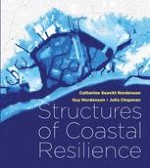2018 | OriginalPaper | Chapter
4. Mapping Coastal Futures
Authors : Catherine Seavitt Nordenson, Guy Nordenson, Julia Chapman
Published in: Structures of Coastal Resilience
Publisher: Island Press/Center for Resource Economics
Activate our intelligent search to find suitable subject content or patents.
Select sections of text to find matching patents with Artificial Intelligence. powered by
Select sections of text to find additional relevant content using AI-assisted search. powered by
